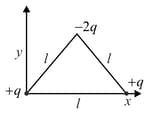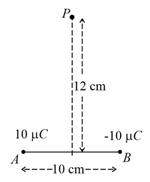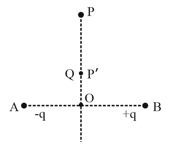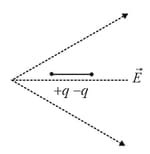EASY
Earn 100
A given charge situated at a certain distance from an electric dipole in the end on position, experiences a force F. If the distance of charge is doubled, the force acting on the charge will be
(a)2 F
(b)F /2
(c)F /4
(d)F /8
50% studentsanswered this correctly
Important Questions on Electrostatics
MEDIUM
Determine the electric dipole moment of the system of three charges, placed on the vertices of an equilateral triangle, as shown in the figure:

MEDIUM
EASY
Two charges and are placed at points A and B separated by a distance of . Find the electric field at a point P on the perpendicular bisector of AB, at a distance of from its mid-point.

MEDIUM

MEDIUM
EASY
EASY
A dipole is placed in an electric field as shown. In which direction will it move?

EASY
MEDIUM
HARD
Two ideal electric dipoles and , having their dipole moment and respectively are placed on a plane with their centres at as shown in the figure. At point on the axis of dipole , the resultant electric field is making an angle of with the axis. The ratio of the dipole moment of and is take

HARD
EASY
MEDIUM
MEDIUM

The distance from at which both of them produce the same potential is:
EASY
MEDIUM
MEDIUM
EASY
MEDIUM
MEDIUM

